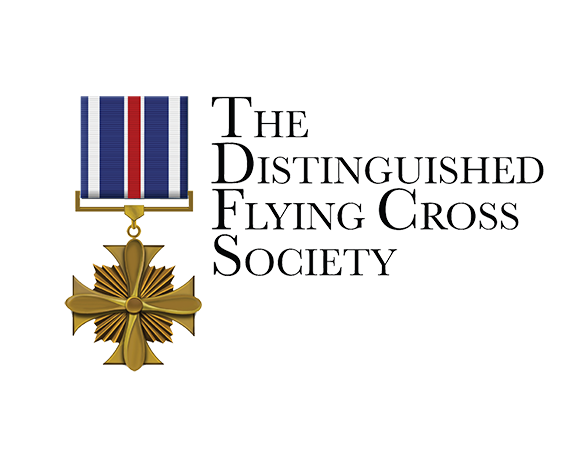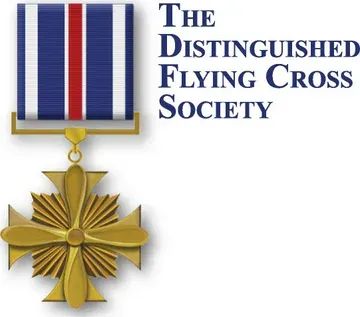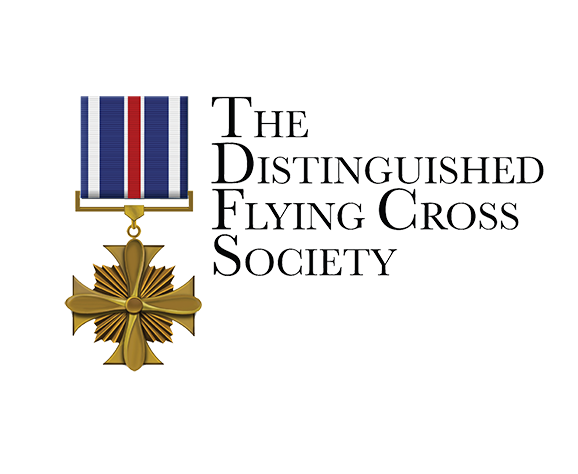John C. Arick
AWARDED DFC:
4
CONFLICT/SPACE FLIGHT/EVENT: Vietnam
MODEL: UH-1E
Citation: 1.)
The President of the United States takes pleasure in presenting the Distinguished Flying Cross to Captain John Chaney Arick, United States Marine Corps, for heroism and extraordinary achievement while participating as a Helicopter Aircraft Commander with Marine Observation Squadron Six on 6 September 1966 in connection with operations against insurgent communist (Viet Cong) forces in the Republic of Vietnam. When a nine man Marine reconnaissance patrol was surrounded and under attack by an enemy force of between thirty-five and forty Viet Cong in Quang Tin Province, Captain Arick launched as Wingman in a section of armed UH-1E helicopters relieving two aircraft on station in the area. After providing cover for his section leader, who had called in fixed wing aircraft, he joined in a series of highly accurate fire suppression runs on the enemy positions. With exceptional skill and daring, he delivered his rocket and machine gun fire to within fifteen meters of the reconnaissance patrol's position, killing one Viet Cong. After he had made several runs on the enemy, his helicopter developed a cyclic bind, forcing him to return to the base at Ky Ha for a replacement aircraft. Returning again to the beleaguered Marines' position, Captain Arick found that his section leader had expended most of his ordnance and that the reconnaissance team was dangerously low of ammunition. The section leader attempted to drop ammunition to the patrol, but due to the unit's location on a very steep peak, the ammunition overshot its mark and landed in the trees, inexcessable to the ground force. Fully aware of the dangers involved, Captain Arick courageously volunteered to attempt another ammunition drop. He overshot the position on the first attempt and was forced to wave off on the second pass because of the intensity of enemy automatic weapons fire. With fearless determination he courageously braved the enemy fire a third time to hover over the zone in the midst of heavy enemy fire and succeeded in delivering the ammunition to the patrol. The entire section then returned to the base to refuel and rearm. Upon returning to the area once again, the section delivered accurate suppressive fire for an aircraft making a second ammunition drop to the ground force. At this time, adverse weather prevented further use of fixed wing aircraft and it was decided to register artillery fire at the base of the hill. Because of his previous artillery experience, Captain Arick assumed control of the section to conduct registration fire. Despite rapidly deteriorating weather, he skillfully maneuvered his helicopter in and around rain showers until he was unable to see the target area. After the weather had closed in completely, and being low of fuel, the section was forced to return to the base. His heroic actions in hovering over the ground force, delivering vital ammunition under heavy enemy fire, and his effective registration of artillery fire against the Viet Cong were instrumental to the success of the air support mission and contributed materially to the defeat of the enemy forces. Captain Arick’s exceptional aeronautical skill, courage in the face of enemy fire, outstanding initiative and loyal devotion to duty were in keeping with the highest traditions of the United States Naval Service.
2.)
The President of the United States takes pleasure in presenting in presenting a gold star in lieu of the second Distinguished Flying Cross to Captain John Chaney Arick, United States Marine Corps, for heroism and extraordinary achievement in aerial flight while serving as a Pilot with Marine Observation Squadron Six, First Marine Aircraft Wing on 4 October 1966 in connection with operations against insurgent communist (Viet Cong) forces in the Republic of Vietnam. As Section Leader and Tactical Air Coordinator (Airborne), Captain Arick led two armed helicopters in support of an emergency retraction mission of a small reconnaissance team nineteen miles southwest of Chu Lai. The ground unit, located on a narrow ridge, was surrounded by a numerically superior Viet Cong force, receiving intense enemy small arms and automatic weapons fire and in imminent danger of being overrun. Enroute from Ky Ha to provide supporting fire, Captain Arick discovered that communication traffic between the beleaguered patrol and the various supporting and controlling agencies was extremely confused. Twice he was given incorrect coordinates of the reconnaissance team's position, but he skillfully analyzed the available data and proceeded to the correct location. Upon arriving at the unit's position, he quickly evaluated the situation and called in supporting fixed wing attack aircraft fire perilously close to the Marine's perimeter, which greatly reduced the intensity of enemy fire and inflicted numerous enemy casualties. Repeatedly disregarding his own safety, Captain Arick made numerous low passes in an attempt to draw enemy fire and enable his gunners to deliver accurate fire on the enemy positions. In addition to directing the jet aircraft attack, he simultaneously vectored the transport helicopters, who had also received incorrect coordinates of the reconnaissance team's location. The situation was further complicated by a faulty radio in his aircraft which forced him to relay all communications with the ground unit through his wingman. Eventually, all contact with the ground unit was lost. Although the weather was rapidly deteriorating and darkness was descending, Captain Arick continued to monitor the situation and calmly briefed the transport helicopter flight upon its arrival in the zone. Despite continued enemy opposition, it was decided to attempt the retraction. Because the landing zone was only large enough to accommodate a single aircraft, the transport aircraft entered the zone one at a time. During each approach, Captain Arick and his wingman daringly maneuvered alongside the transports to provide covering fire, enabling the transports to successfully complete their retraction mission. Although dangerously low on fuel, Captain Arick's flight remained on station until assured that all members of the Marine ground unit was safely aboard the transports. He then directed further air strikes against the fleeing Viet Cong until darkness and rain obscured the target. By his brave and selfless actions, he was instrumental in the successful accomplishment of the retraction operation and undoubtedly helped save numerous Marines' lives. Captain Arick's superior aeronautical skill, fearless determination and dedication to duty under the most adverse conditions were in keeping with the highest traditions of the Marine Corps and of the United States Naval Service.
3.)
The President of the United States takes pleasure in presenting in presenting a gold star in lieu of the third Distinguished Flying Cross to Captain John Chaney Arick, United States Marine Corps, for heroism and extraordinary achievement in aerial flight while serving as a Pilot with Marine Observation Squadron Six, Marine Aircraft Group Thirty-Six, First Marine Aircraft Wing in connection with operations against insurgent communist (Viet Cong) forces in the Republic of Vietnam. On 30 January 1967, Captain Arick was launched as the Flight Leader of two armed helicopters assigned to support two transport helicopters on a mission to extract a beleaguered Marine reconnaissance patrol from a mountainside near Tien Phouc. Despite darkness and low clouds which obscured the extraction area, he descended several times through the cloud layers into the hazardous mountainous terrain in an attempt to locate the patrol’s position. Receiving enemy sniper fire as he maneuvered his aircraft into the hostile fire area, he subsequently located the Marines on a ridgeline fifty feet below the clouds. After climbing· above the cloud cover, he rendezvoused with the transport helicopters and, with his external lights turned on to mark his helicopter's position, skillfully led each extraction helicopter in a perilous descent into the landing zone. As the transport aircraft identified the landing zone, Captain Arick maneuvered his aircraft to provide effective suppressive fire upon the enemy. By his courageous and selfless actions, he was instrumental in the successful retraction operations and undoubtedly helped save numerous Marine lives. Captain Arick's superior aeronautical skill, fearless determination and steadfast dedication to duty under extremely adverse conditions were in keeping with the highest traditions of the Marine Corps and of the United States Naval Service.
4.)
The President of the United States takes pleasure in presenting in presenting a gold star in lieu of the fourth Distinguished Flying Cross to Captain John Chaney Arick, United States Marine Corps, for heroism and extraordinary achievement in aerial flight while serving as a Pilot with Marine Observation Squadron Six, Marine Aircraft Group Thirty-Six, First Marine Aircraft Wing in connection with operations against insurgent communist (Viet Cong) forces in the Republic of Vietnam. On the morning of 10 May 1967, Captain Arick launched as Tactical Air Controller (Airborne) and Section Leader of two armed UH-1E helicopters on a mission in support of a Marine company heavily engaged with a large Viet Cong force near Hill 110. A platoon was pinned down by the heavy volume of enemy fire and had sustained several casualties. Upon arrival over the besieged Marine position, Captain Arick immediately commenced accurate rocket and machine gun strafing runs upon the enemy, often within twenty-five meters of the Marine positions. Forced by his relentless attacks to seek cover, the Viet Cong temporarily halted their attack which enabled elements of the beleaguered ground force to evacuate their wounded and move to more advantageous positions. In order to allow the remaining pinned down elements of the company to break contact, he then skillfully directed fixed-wing aircraft in delivering their ordnance on the hostile positions. Having depleted his ammunition supply and because his aircraft was dangerously low of fuel, he proceeded to the USS OKINAWA, refueled and rearmed his aircraft and expeditiously returned to the battle area. Subsequently, while he was directing air strikes, Captain Arick alertly observed a Viet Cong force maneuvering along a trench line toward the Marine position. After warning the ground unit of imminent danger, he immediately attacked the well camouflaged enemy and forced them to flee. After refueling and rearming his helicopters, he returned to the besieged Marines' position. Demonstrating outstanding professional ability, Captain Arick skillfully resumed his direction of fixed-wing air strikes on the enemy and personally made repeated low-level rocket attacks and strafing runs on the hostile positions. During one of his rocket runs, his aircraft received four hits from ground fire. Forced once again to return to the USS OKINAWA to refuel and rearm his aircraft, he subsequently discovered that his rotor blades had been extensively damaged by enemy fire. Quickly obtaining his wingman's helicopter, Captain Arick proceeded to the battle area where he continued to attack the enemy and direct accurate air strikes on the hostile positions, often within 100 meters of the Marine ground unit, which enabled transport helicopters to evacuate the casualties and resupply the Marine units. His professional skill and determined efforts were an inspiration to all who served with him and contributed immeasurably to the accomplishment of the hazardous mission. Captain Arick’s steadfast courage, exceptional aeronautical ability and selfless devotion to duty at great personal risk were in keeping with the highest traditions of the Marine Corps and of the United States Naval Service.


